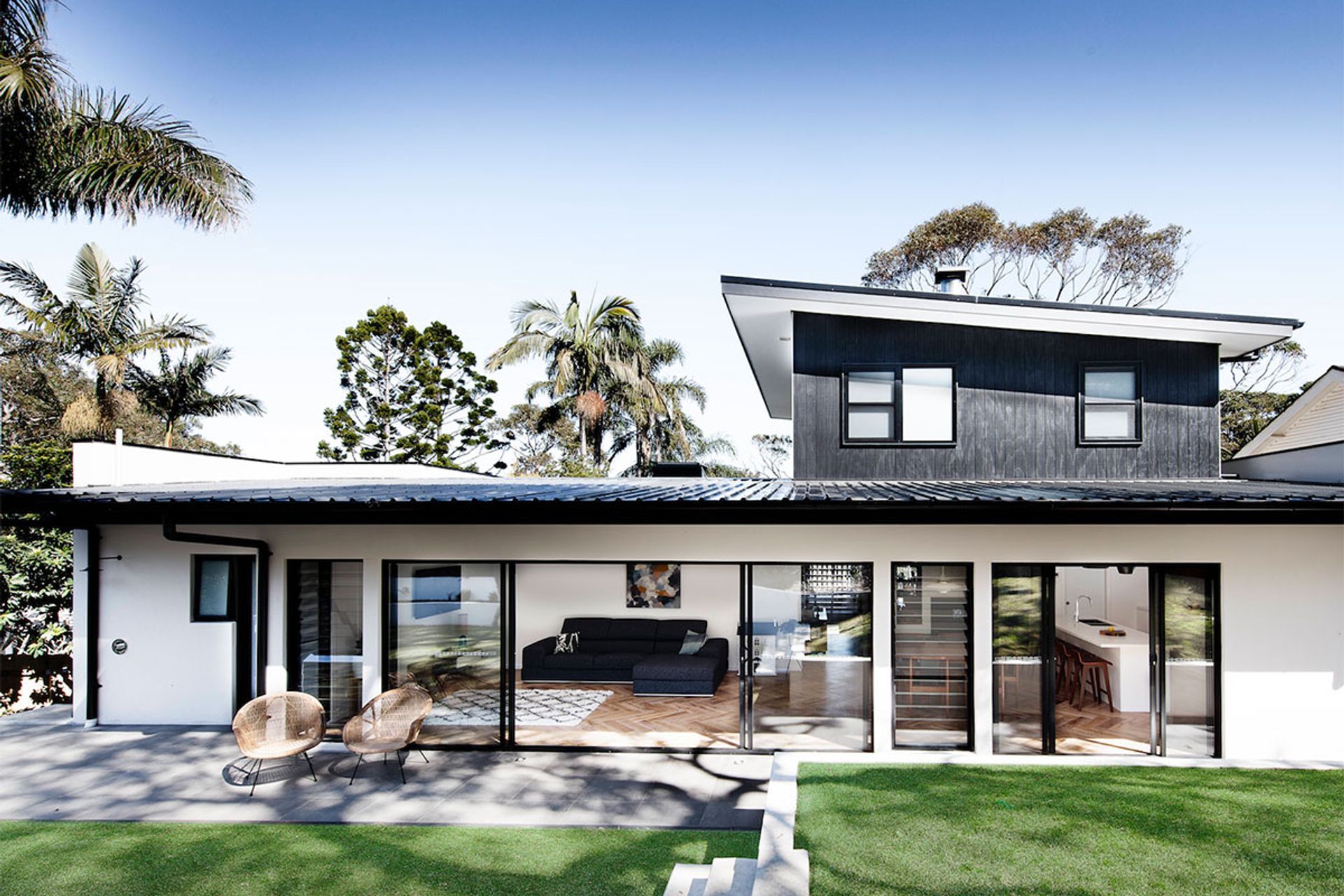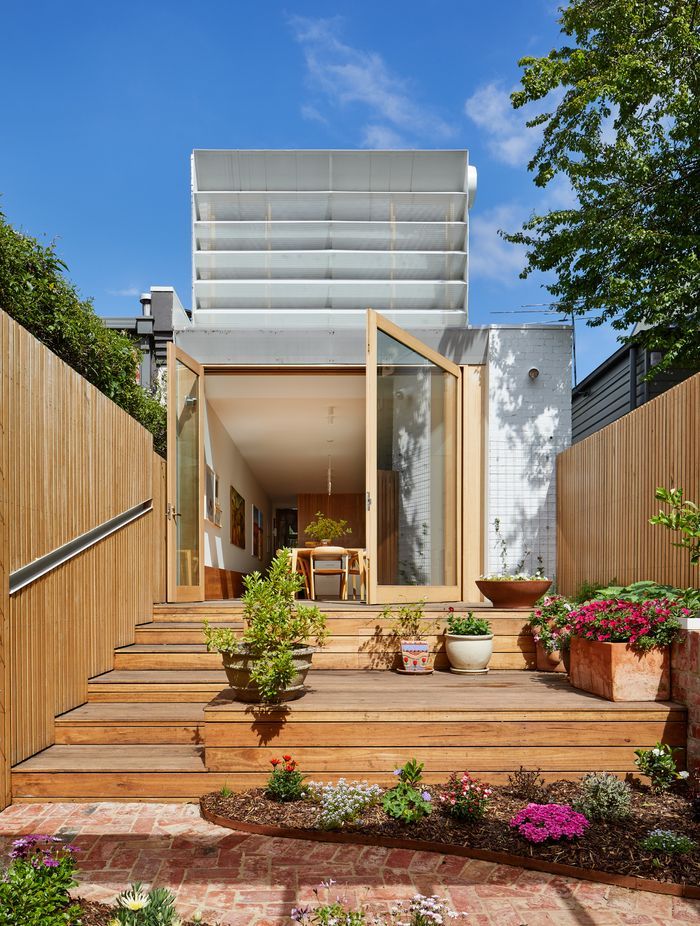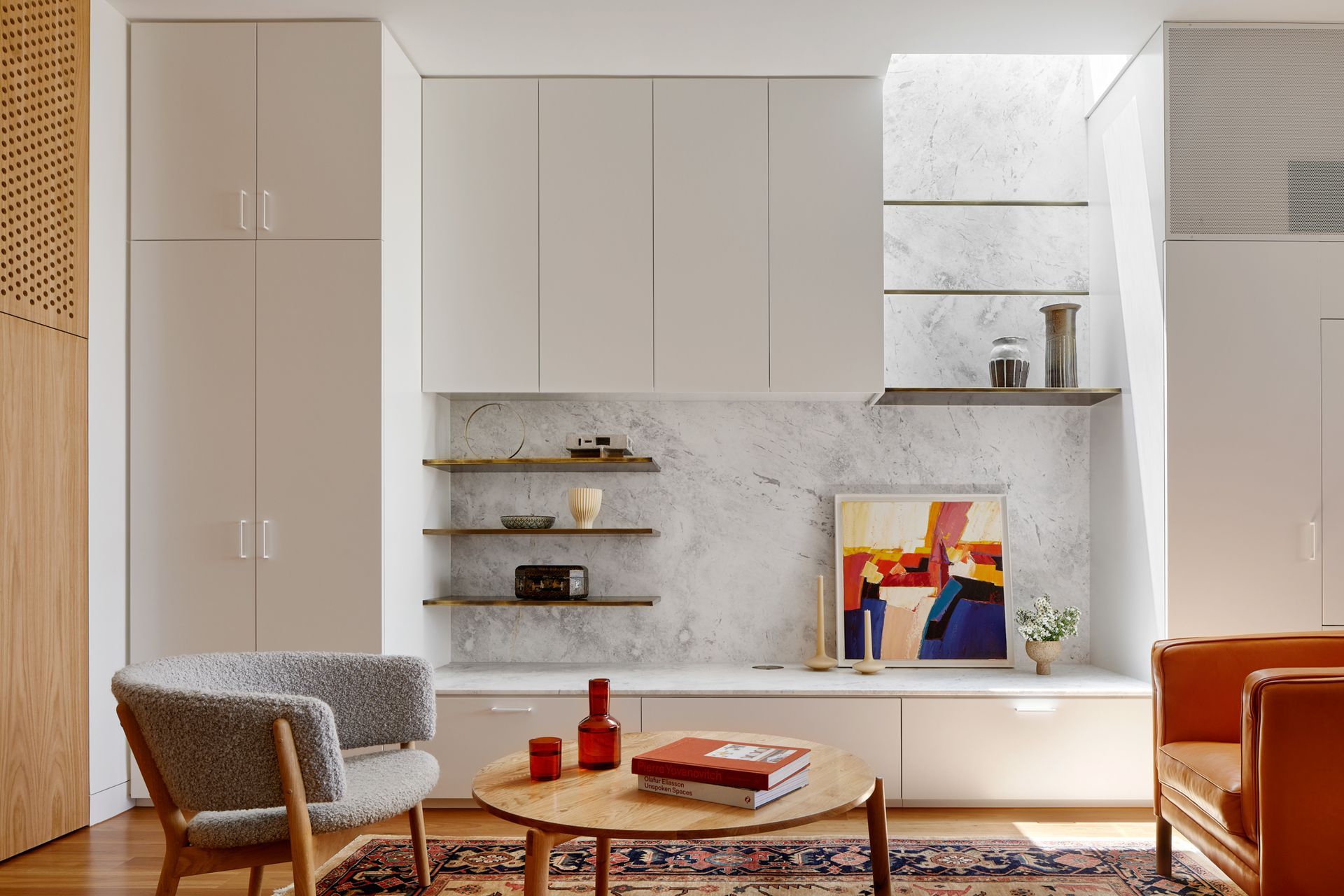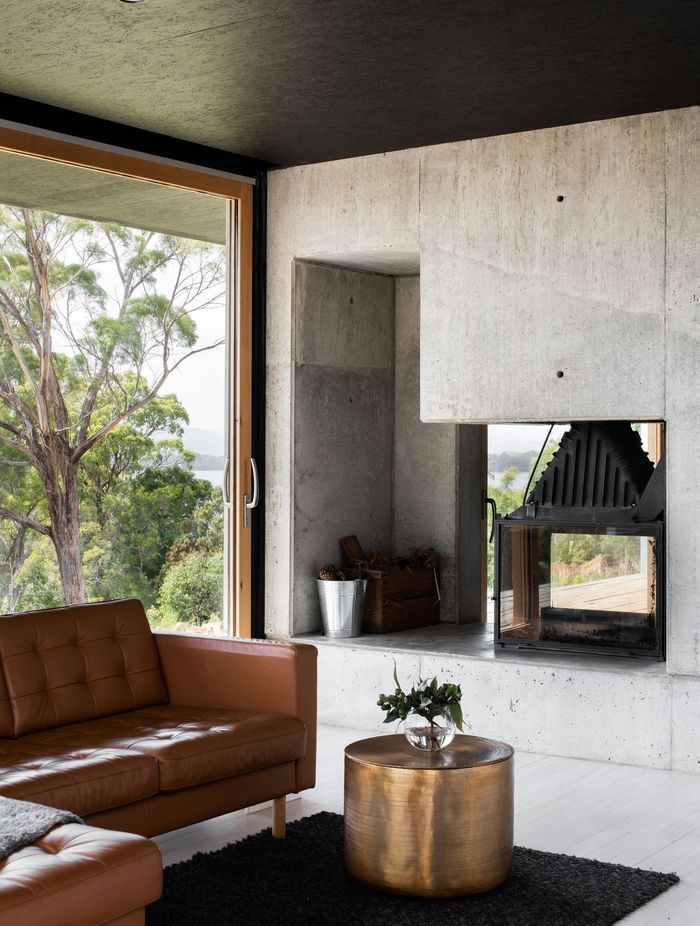Why you should hire an architect for your next build or renovation
Written by
01 August 2022
•
11 min read

Choosing to engage an architect for your next build or renovation is a big decision. Not only is working with an architect at full scope a large financial investment, but the architect you choose to work with will influence the way you live in your home, and your lifestyle, in the years to come. However, engaging an architect has many benefits that homeowners often aren't aware of; they can help you accomplish your design goals while making the process less stressful, and recent studies have even indicated that architect-designed homes and renovations sell for higher values on the Australian property market.
With this in mind, we spoke to six architects from around Australia about the benefits of hiring an architect, the mistakes homeowners often make when engaging an architect, and how to have a collaborative and productive relationship with your design professional.
What does an architect do?
Architects design the structures we use every day, from homes and apartments to commercial business spaces and public buildings, but the role of the architect encompasses much more that that. “We work on the first sketches of your design through to being on the construction site with the builder,” says Fiona Dunin, founder and director of FMD Architects. “We take the stress off the client by solving problems with the builder, managing the project and all council approvals, documentation, building permits – the owner just makes decisions on design choices.”
Architects also bring an elevated level of design knowledge to your project. “Being an architect is being able to strike a balance between pragmatics and poetry. An architect must balance problem solving and pragmatic design with creativity, and the two are always playing off against one another,” says Fiona. “An architect can give you something you’ve never thought of before. You might have a preconceived idea and an architect might challenge you on that idea for the better, to make your home smarter, more efficient and more beautiful than you had ever considered.”
How can an architect benefit a new build or renovation?
While some builders and mass developers are fundamentally commercially driven to build a house that appeals to their chosen market segment and optimises their profit, an architect works toward designing and achieving the specific goals of the client they’re working for, explains Robert Harwood, director of My Architect.
“An architect will tailor a design specifically for you and your personal circumstances on your land, or with respect to the existing home. It is a unique, customised solution that often involves hundreds of hours discussing your aims and expectations in terms of how you want to live today and in the future, and then documenting it for construction to achieve the final built result. An architect-designed result will also increase the value of the property considerably,” says Robert. “A large part of the role of the architect – when engaged for full services – is to liaise with the builder throughout construction. An architect will act in your interests, much like a lawyer, doctor or dentist, to professionally assist you.”
Jet O’Rourke, architect and associate at Cumulus Studio, takes a similar view and further explains the difference between an architect and a draftsperson. “While a draftsperson might deliver the functional requirements of a brief, such as a new living, dining or kitchen space, an architect provides added value by considering how those spaces capture views, natural light, ventilation, integrate the landscape, remain environmentally sustainable and connect to the wider context through material selection.”
Erica Slocombe, co-founder and principal architect at Mihaly Slocombe Architects, explains that building a new home is an incredibly complex process that requires myriad elements to work together harmoniously to create a successful outcome, a situation architects are uniquely trained to manage.
“From design ideas to material selection, environmental impact, financial management, construction, building contracts, regulations and more, each of these elements are their own field of expertise. Architects possess a broad set of skills that allows them to understand these elements, how they all relate to each other and how best to navigate them to achieve your ideal home,” says Erica. “Building or renovating a new home is generally the largest investment your family will make in your future, so ensuring you have an architect to design and advocate for your vision and navigate the pitfalls of construction will get you the best possible return on this investment.”
Common mistakes to avoid
One of the quickest ways to limit the creative potential of your project is not working with your architect collaboratively, with trust and honesty. There are some behaviours to avoid when establishing a working relationship with your architect.
Mistake 1: Unclear communication
Homeowners often get apprehensive about what information or questions they need to approach their architect about, given the many unknowns early in the project. “Our job is to untangle the many mixed needs and constraints in any project and give it some clarity, direction and, of course – some excitement! The process of designing is just as important as the outcome and that is something you do together with the homeowner,” says Damian Goode, principal architect at Hive Architecture. “The only real mistake people might make is trying to set a brief for the project by describing a solution that can sidestep the all-important collaborative process of designing together.”
It’s important that homeowners don’t mistake the time it takes to finalise their design and construction plan as the architect not paying attention to the project, Robert explains, but this can be avoided by keeping the lines of communication open and clear.
“Most architects are very good at walking the client through the process, ensuring they understand each stage and feel comfortable with how things are proceeding. It’s a relatively long and detailed relationship and it does takes time,” says Robert. “An architect is usually happy to be responsive to questions throughout the process. It’s best to put questions and concerns in a short, to-the-point email for the architect to do some preparation to respond, rather than an unexpected call,” says Robert.
Mistake 2: Not aligning the brief with the budget
Naturally, one of the most obvious mistakes people make when engaging an architect is having a disconnect between what they want to achieve with their project, and the budget they have available to do it. “A good architect should recommend the engagement of a quantity surveyor to ensure the preferred design can be developed in accordance with the budget,” says Jet. “Sometimes this requires educating the client on what is a realistic budget for their project to begin with.”
Mistake 3: Too much – or too little – inspiration material
Building a home is the biggest investment many people will ever make. As such, it’s understandable that homeowners may have pages of source material they’ve based their ideas, aesthetic and brief upon – but it’s important you can narrow down the specifics of what it is you like from your inspiration images. “In the age of Pinterest, it's common for clients to have too many good ideas for their home. Refine your favourite examples down to a select few and discuss with the architect why they inspire you,” suggests Jet.
Margaret Skilbeck, principal architect at Architelle, says that the more information you can provide your architect with, the richer your design solution will be. “Homeowners have often done sketches of layouts and collected pictures of houses, rooms and colour schemes that collectively demonstrate how they see themselves living in their renovated home. However, many people are reluctant to share these ideas with their architect as they don't want to direct the architect too much, lest they restrict the design outcome. A good architect can filter your ideas and integrate key aspects into the solution,” says Margaret.
Mistake 4: Not choosing an architect you like
While qualifications, reputation, awards and other accolades are important, Erica says you must choose an architect you trust to get the results you desire. “The key decision-maker should simply be, ‘do you trust them to capture and enhance your vision’? The architectural process is an intimate and lengthy one and you’ll be sharing your dreams and lifestyle ambitions with your architect, so feeling comfortable that you share common values and can have open and candid conversations is essential,” says Erica.
Fiona is of the same mind as Erica and has some sage advice for those looking for an architect. “You’re going to spend at least two years working with your architect, so you have to like them!” says Fiona. “If you get a bad feeling from them or don’t like them straight away – don’t work with them. You must trust your architect – but never micromanage them.”
“The perfect architect for you will be the one best able to empathise with you, who listens and is focused on delivering a distinctive home that delights you every day, in every season,” adds Robert.
How to build a better working relationship with your architect
The success of your project depends upon your relationship with your architect. There are some key tactics you can employ to ensure everyone enjoys the process.
Find someone that shares your values and interests
Damian explains the key to a good working relationship is engaging an architect that shares your values, interests and character. “The best project results involved homeowners we’ve connected with. Sometimes that happens naturally, and we find ourselves sharing ideas and discussing how things could work, which builds early excitement for the project,” says Damian. “In other cases, the homeowners may not realise there’s a process to design, so we introduce them to how we work in stages and involve them in the way we work. Typically, we try to tap into their passion or values in some manner and connect this to the project.”
Develop a clear brief and deliver feedback promptly
Jet emphasises the importance of having a strong, clear brief from the outset, and delivering constructive feedback to your architect as soon as possible. “A good client will explain – in detail – how they want to live in their home, what sort of activities they enjoy, and what a typical weekend might look like. Understanding these inner workings has a profound influence on the outcomes of our residential projects,” says Jet. “Throughout the process, the architect will seek your approval on the project and that its development not only meets your requirements but exceeds your expectations. A good architect values constructive feedback, so if there are things that need to be revisited or amended, raise them as early as possible in the design process.”
Take your architect’s advice and don’t be afraid to ask questions
Renovating or building a home requires a massive financial investment that can feel overwhelming initially, but Margaret says you must trust your architect in order to get the best results. “Keep in mind that architects generally have no other agenda than seeking the best outcome for your benefit, and they’ve done this many times before – so they know the drill!” says Margaret. “No promises that everything will be perfect, but they will be your best asset to help you navigate the complex process that renovating can be, so ask questions, take their advice, and lean in a little.”
Be open to new ideas
“Knowing what you want to achieve in your renovation or new home is important, but being open to new ideas and strategies to achieve this is where you will really see the benefit from working with an architect,” adds Erica.
How much does an architect cost?
There is a preconceived idea that engaging the services of an architect is a costly decision, and that architects only work on large or premium projects. However, Fiona says there’s an architect to suit every project – no matter how large or small – you just need to know where to look.
“The cost will depend on the architect. Some work on a fixed fee while other opt for a percentage based on the budget, and that fee can vary depending upon reputation and awards – just as it does with lawyers – it isn’t a one-size-fits-all situation,” says Fiona. “We add value through design and there is a fee for that, but what you pay you’ll get back in spades in terms of the added value and bespoke design. We work on small budgets and multi-million dollar budgets, but the deciding factor is whether we like the people. If they have the right attitude we’ll take on their project, no matter the size.”
Find a trusted architect on ArchiPro and get in touch.








